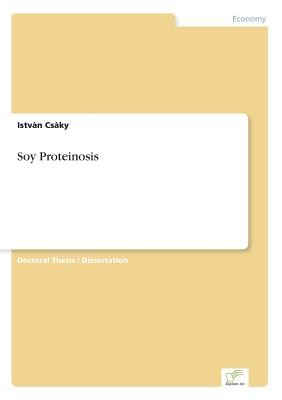
- We will send in 10–14 business days.
- Author: Istvà n Csà ky
- Publisher: Diplom.de
- Year: 2004
- Pages: 96
- ISBN-10: 3838683633
- ISBN-13: 9783838683638
- Format: 14.8 x 21 x 0.6 cm, minkšti viršeliai
- Language: English
- SAVE -10% with code: EXTRA
Reviews
Description
Inhaltsangabe: Abstract: 1. High prevalence of antibodies to soy antigens was demonstrated not only in swine and poultry sera, but also in commercial products as horse-radish labelled antibodies from goats, commercial complement preparations manufactured from guinea pig sera. 2. Upon heat treatment, which is recommended for the inactivation of the anti-nutritive components of soybeans, the formation of protein fibrils may occur. This fibril formation is of amyloid character, which may render the proteins involved resistant to proteolytic digestion. 3. One or more of the components of the conglycinin preparation have chaperone activity, ie. prevents the aggregation of proteins, thus reducing digestibility. 4. A ccording to laser particle sizer test protein A containing Staphylococcus aureus cells show substantial size reduction if the protein A bound antibodies are exposed to the appropriate antigens. This size reduction may also be responsible for dermatological diseases if circulating antigens reach antibody covered bacteria in the skin and the resulting size reduction leads to local, heamatological dissemination of the disrupted bacterial colonies (atopic dermatitis). 5. Amylase and xylanase reduce the amount of antigens in soybean, thus demonstrating the antigenic role of polysaccharides and one of the possible pathways of enzyme supplementation benefits. The method used for this demonstration can also used for optimizing enzyme combinations for feeds of different composition. 6. Soy overfeeding may lead to kidney and pancreas conditions which are characteristic of the protein overdosing. 7. Circulating antibodies to soy or soy components themselves do bind complement thus compromising the non-specific immunity of the host. 8. Soy antigens and Clostridial antigens may have interactions and/or sequence homologies with immunopathological implications. Inhaltsverzeichnis: Inhaltsverzeichnis: Summary2 Aim of the study5 The use of soybean8 Soy protei
EXTRA 10 % discount with code: EXTRA
The promotion ends in 21d.02:59:25
The discount code is valid when purchasing from 10 €. Discounts do not stack.
- Author: Istvà n Csà ky
- Publisher: Diplom.de
- Year: 2004
- Pages: 96
- ISBN-10: 3838683633
- ISBN-13: 9783838683638
- Format: 14.8 x 21 x 0.6 cm, minkšti viršeliai
- Language: English English
Inhaltsangabe: Abstract: 1. High prevalence of antibodies to soy antigens was demonstrated not only in swine and poultry sera, but also in commercial products as horse-radish labelled antibodies from goats, commercial complement preparations manufactured from guinea pig sera. 2. Upon heat treatment, which is recommended for the inactivation of the anti-nutritive components of soybeans, the formation of protein fibrils may occur. This fibril formation is of amyloid character, which may render the proteins involved resistant to proteolytic digestion. 3. One or more of the components of the conglycinin preparation have chaperone activity, ie. prevents the aggregation of proteins, thus reducing digestibility. 4. A ccording to laser particle sizer test protein A containing Staphylococcus aureus cells show substantial size reduction if the protein A bound antibodies are exposed to the appropriate antigens. This size reduction may also be responsible for dermatological diseases if circulating antigens reach antibody covered bacteria in the skin and the resulting size reduction leads to local, heamatological dissemination of the disrupted bacterial colonies (atopic dermatitis). 5. Amylase and xylanase reduce the amount of antigens in soybean, thus demonstrating the antigenic role of polysaccharides and one of the possible pathways of enzyme supplementation benefits. The method used for this demonstration can also used for optimizing enzyme combinations for feeds of different composition. 6. Soy overfeeding may lead to kidney and pancreas conditions which are characteristic of the protein overdosing. 7. Circulating antibodies to soy or soy components themselves do bind complement thus compromising the non-specific immunity of the host. 8. Soy antigens and Clostridial antigens may have interactions and/or sequence homologies with immunopathological implications. Inhaltsverzeichnis: Inhaltsverzeichnis: Summary2 Aim of the study5 The use of soybean8 Soy protei


Reviews